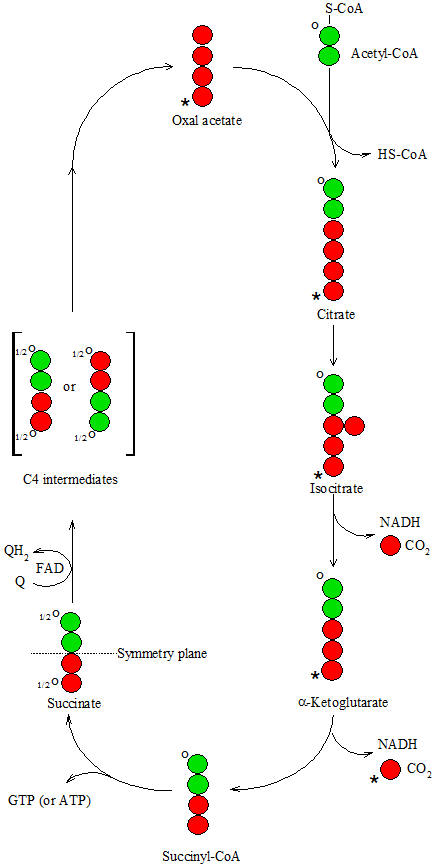Krebs cycle carbons
From Proteopedia
The way of the carbon atoms in the Krebs cycle
Figure: The way of the C-atoms of oxal acetate and acetyl-CoA
Although it may seem that the two carbon atoms that are introduced into the krenbs cycle at the beginning are ejected from the acetyl group in the form of two CO2 molecules, this is not true.
These carbon atoms will be oxidised to CO2 when they take the second and third "round" in the Krebs cycle (see figure). This fact was determined by isotope labeling analysis: The C4 atom of oxal acetate (*) is the C1 atom of the α-ketoglutarate and is released when α-ketoglutarate is transformed to succinyl-CoA. The C1 atom of acetyl-CoA (°), will be the C5 atom of α-ketoglutarate. After succinyl-CoA is transformed to succinate, this C-atom cannot the localised clearly because half of the C-atoms will be the C1 atom, the other half the C4-atom. This is because succinate is a symmetrical molecule, so that the isotope-labeled carbon atom can take both of the two positions. As previously mentioned, the carbon atoms of the introduced acetyl group are released only in the subsequent runs of the cycle. The first is therefore released in the second run after the introduction of the acetyl group, because each time the terminal carboxylate groups of the oxal acetate will be split off as CO2. The release of the second carbon atom of the previously introduced acetyl group is not necessarily linked to the third pass of the Krebs cycle, but depends on the random position of the carbon atom from the molecule, that means whether it is the C1 or C4 of oxal acetate.

